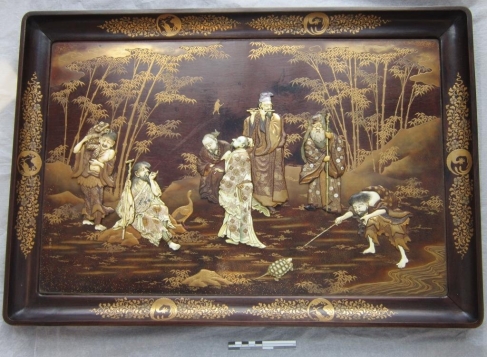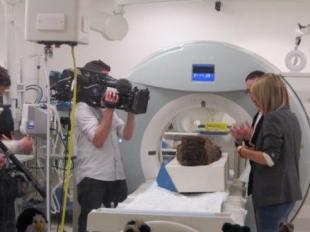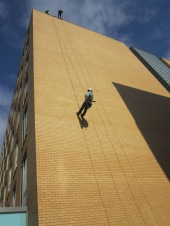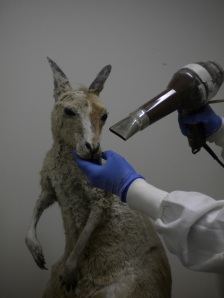We have many hazardous objects within our collections, The Botany department had asked me to have a look at a small bowl earthenware bowl which contained Curare, and to pack it for safe storage.
Curare is the poison used on the tips of poison arrows, and is found in Peru and Ecuador. It is derived from plants, and is a resinous dark brown to black mass with a sticky to hard consistency, it can also include snake, scorpion, frog and centipede venom. Preparations are often found in earthenware pots, such as this one, but also in gourds and bamboo. The poison has a very long life and can kill it ingested or enters the bloodstream, so caution needed to be taken. I worked within a fume cupboard wearing a mask, gloves and lab coat, these were disposed of after.
The bowl was currently stored within a glass jar, which offered it no protection.
I decided to use Plastazote, an inert foam to help support the bowl within the jar and to help prevent it from moving around.
You can see the palm leaf on the top of the jar which was originally used to seal it.

Finally I added some Hazard tape to seal the lid, to prevent it being opened accidentally, and added a Safety Data Sheet to be stored with the object in order to let any member of staff or volunteers know what is within the jar.

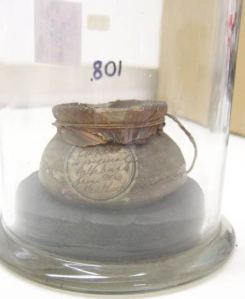





 The area of the tray with detached and missing inlay. The adhesives used to attach the inlay, protein glue and lacquer depending on the area. are visible on the surface.
The area of the tray with detached and missing inlay. The adhesives used to attach the inlay, protein glue and lacquer depending on the area. are visible on the surface. 



